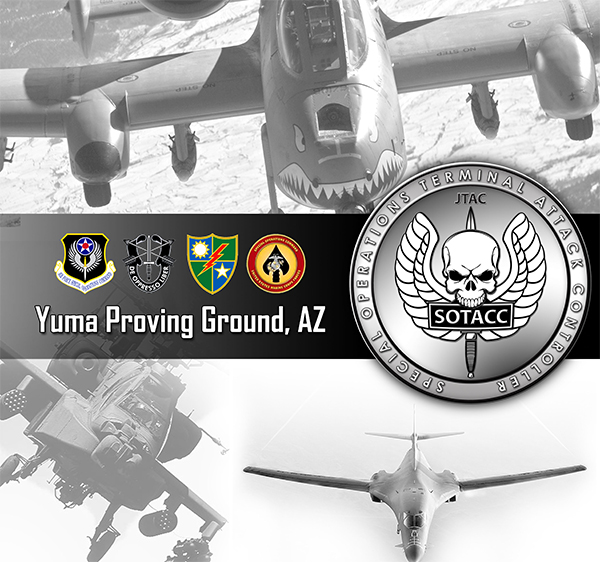- Homepage >
- Team YPG >
- Tenants
Special Operations Terminal Attack Controllers Course
The purpose of the Special Operations Terminal Attack Controller Course (SOTACC) is to teach Special Forces troops from the Army, Air Force and Marine Corps the conduct of close air support missions and fully certify them as qualified Joint Terminal Attack Controllers (JTAC). Since the use of close air support is a very real possibility whenever a unit enters combat, controlling these missions from the ground is critical. The concise and detailed dialog between the controller on the ground and the pilot in the sky is what affords the prosecution of the target and the ability to avoid friendly casualties.

"This is one of the most critical skill sets any special operations Soldier can have," said a senior non-commissioned-officer-in-charge at the school. "Right now, there are many Soldiers overseas performing what they learned here at SOTACC."
SOTACC involves high explosive bombs dropped from aircraft streaking through the sky thousands of feet above providing close air support to ground troops. The course, offered six times each year, trains students to conduct precise close air support missions involving the control of multiple aircraft flying at different altitudes and approaching from various directions.
All bombing and firing missions take place over Yuma Proving Ground, on an approximately 35 square mile zone located a mere 25 minute drive from SOTACC's classroom facilities. A number of armored tank hulls and trucks are positioned within the square for use as targets.
Aircraft fly in from a number of nearby military installations such as Luke, Davis-Monthan and Nellis Air Force Bases, Marine Corps Air Stations Yuma and Miramar, and more. Pilots generally jump at the prospect of participating in missions with the school's students training to become JTAC certified, for the missions provide some of the most realistic close air support training available anywhere.
